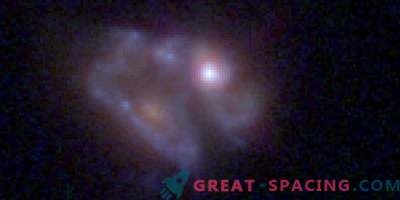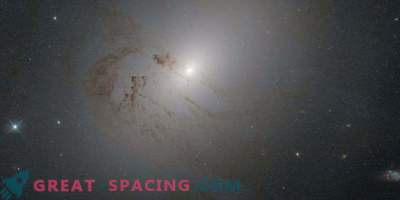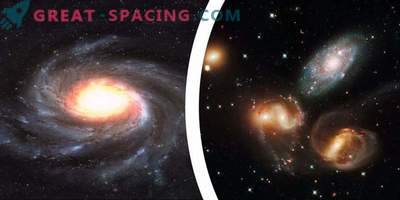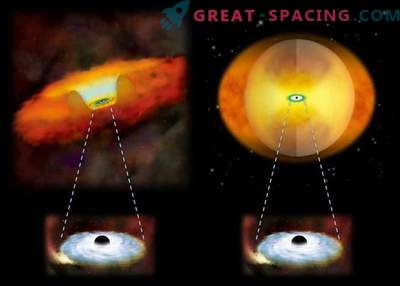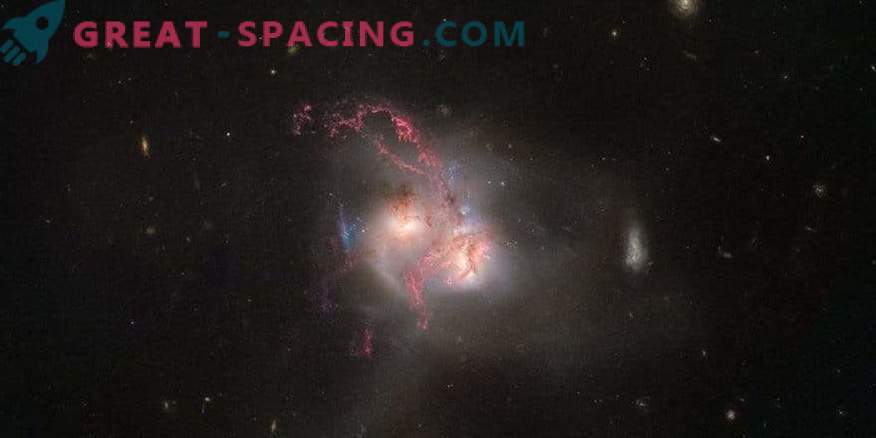
NGC 5256 is a pair of galaxies in the final stage of merger. Previously, they were captured by the Hubble telescope to mark the 18th anniversary of work (2008). New data shows how dust and gas winds inside and outside the galaxy.
In this picture, the galaxy NGC 5256 delights with its shape and color. Smoke-like jets are ejected in all directions, and a bright core illuminates chaotic dust and gas patches. The fuzzy structure is due to the fact that before us are two merging galaxies.
NGC 5256 is 350 million light-years distant from us and lives on the territory of the Great Bear. These are two disk galaxies divided by 13,000 light years. Gas, dust and the stars inside them spin in an energetic cosmic dance, generating new stars.
However, the stars rarely collide, because between them are long distances. However, as the merger proceeds, tidal effects form new structures, such as chaotic jets. They stabilize only after millions of years.
Approximation to NGC 5256
In addition, in every galaxy there is an active galactic core, where gas and other fragments are absorbed by a supermassive black hole. A survey by the Chandra X-ray Observatory shows that both the nuclei and the hot gas region between them are heated by shock waves that form when high-speed gas clouds collide.
In the early universe, galactic merger events were much more common. It is believed that this is what led to the galactic evolution. Now you can see signs of past clashes. For example, in the Milky Way you can find huge parts of the former individual galaxies. Now it absorbs the dwarf galaxy Sagittarius and once will face Andromeda.
On the right in the picture is seen another pair of contacting galaxies. A few degrees noticeable M51.

